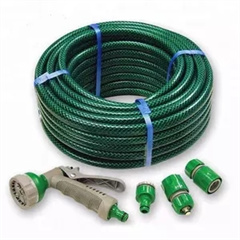1. Agricultural Revolution: The early use of shovels can be traced back to prehistoric times when humans first transitioned from hunter-gatherer societies to settled agricultural communities. Shovels, initially made from primitive materials like wood and bone, were used to dig soil for planting seeds, creating irrigation channels, and cultivating crops. This marked a crucial turning point in human history, as agriculture enabled food surplus, settled living, and population growth.
2. Construction and Infrastructure: As societies developed and populations expanded, the shovel became an essential tool in construction projects. Ancient civilizations such as the Egyptians, Greeks, and Romans used shovels to excavate foundations for buildings, dig wells, construct roads, and create defensive structures like moats. The shovel’s ability to move earth efficiently played a significant role in the growth of cities and the establishment of civilizations.
3. Mining and Resource Extraction: The Industrial Revolution further elevated the importance of shovels. With the rise of mining and resource extraction, shovels were adapted and improved to handle heavier loads and tougher materials. They became integral to coal mining, ore extraction, and other industrial processes, powering the growth of industries that fueled economic expansion and urbanization.
4. Transportation Infrastructure: Shovels played a critical role in the development of transportation infrastructure. During the expansion of railways and canals, shovels were used to dig trenches, grade tracks, and create embankments. They were also employed in the construction of roads, bridges, and tunnels, enabling efficient movement of people and goods.
5. Urban Development: The shovel contributed to urban development by aiding in the creation of sewage systems, water supply networks, and underground utilities. These essential systems enhanced public health and quality of life in cities.
6. Agriculture and Land Development: Modern agriculture relies heavily on mechanized equipment, including large-scale shovels like backhoes and excavators. These machines are used for tasks such as land preparation, digging irrigation ditches, and creating terraces, allowing for increased food production to support growing populations.
7. Infrastructure Maintenance: Shovels continue to be indispensable in maintaining and repairing infrastructure. From repairing roads and bridges to clearing debris after natural disasters, shovels are used by construction workers, road crews, and emergency responders to keep communities functional and safe.
8. Scientific Exploration: Shovels have even played a role in scientific exploration, such as in archaeology and paleontology. They are used to carefully unearth artifacts, fossils, and ancient remains, contributing to our understanding of the past.
The evolution of the shovel from a simple tool made from natural materials to sophisticated, mechanized equipment reflects the continuous innovation driven by human needs and technological advancement. The shovel’s journey showcases how a seemingly basic tool has shaped human progress across diverse fields, enabling us to shape the environment, build civilizations, and advance society.
























